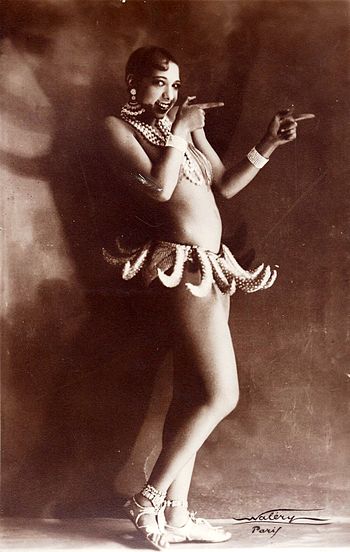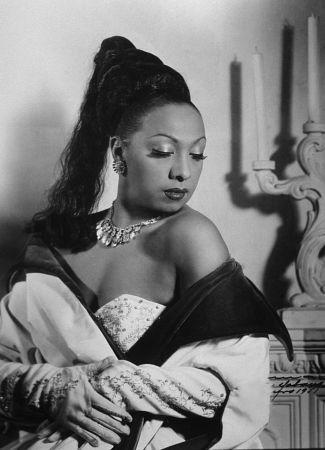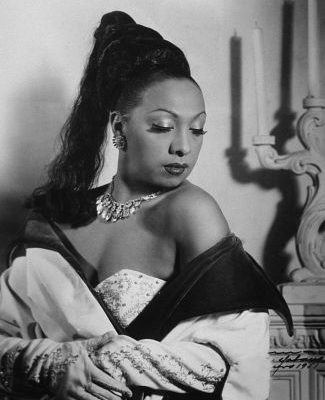
Folies Bergère production “Un Vent de Folie”
(Photo credit: Wikipedia)
From St. Louis, Mo, to Harlem, to Paris,
From washergirl to cabaret star to French spy.
Born Freda Josephine McDonald on June 3, 1906, she was the illegitimate child of a vaudeville drummer, Eddie Carson, and a fellow performer, Carrie McDonald. When Carson abandoned the two, Carrie became a laundress, and Josephine would as well, being sent into white households at the age of eight, where one woman burned the child’s hands for putting too much soap in the laundry.
At age thirteen, she was living on the streets, sleeping in card boxes and scavenging for food from trash cans. Sometime around then she made her first of four marriages; this one very short-lived.
At age 15, Josephine would join the St. Louis Chorus vaudeville show, and from there, her talent springboarded her to New York City.
New York’s Nice, But Paris Is Always A Good Idea
Although she enjoyed success in New York, it wasn’t until Josephine Baker (she divorced her second husband, but kept the name) relocated to Paris and began appearing nearly nude onstage in La Revue Nègre in 1925 that she took Europe by storm. She was not afraid to shake her banana skirt, to cut a rug in her Charlston, to cross her eyes and clown for the camera or the audience. Josephine appeared in several movies, and as a muse for the artistic community of the world, including Langston Hughes, Ernest Hemingway, Pablo Picasso, Christian Dior, and many others.
She also knew that, despite her success, her voice needed help, and worked with a vocal coach in 1934 to prepare for a six month opera role as the lead in La creole.
Note the look that Liza Minelli would later copy.
In the 1930’s, Josephine married again, to a Frenchman this time. But despite all the incredible things her body could do, having babies wasn’t one of them.
Winning over America was another. When she visited the United States in 1935-1936, the audiences in the land of her birth did not pack in at the box offices to see her.
But she could be a kick-ass spy,
Too Busy Eyeing Her Tits to Suspect Her Brain
During World War II, Josephine’s cachet as an entertainer allowed her to mingle at parties with high ranking Japanese officials, Italians, traveling to Portugal and North Africa. Her reports were written in invisible ink on her sheet music, or pinned inside her underwear.
It was in North Africa she would suffer her last miscarriage, with a resulting infection that required a hysterectomy and still developed into septicemia.
After the end of the war, Josephine would receive the highest decorations for her service, as well as being made a Chevalier of the Legion d’honneur.
America, 1950’s Style
Josephine had long supported the American Civil Rights Movement from afar. In 1951 she returned to the US, to performed in Miami, after fighting for and winning a battle to perform to a desegregated audience. But a public row with columnist Walter Winchell led to a termination of her work visa, and she had to return to France.
She was able to return to the United States in the 1960’s, and was the only official female speaker at the March on Washington with Dr. Martin Luther King, Jr.
She Built Her Own Rainbow Tribe Long Before Madonna or Angelina

Josephine had the idea that she could build her own family out of children adopted from all over the world. She adopted Akio from Japan, Jari from Finland, Luis from Colombia… eventually, twelve children in all.
However, she did not prove the kindest, most attentive, or loving of mothers, leaving them for long periods of time with their nannies, housing them in the attic of her chateau, beds in a row as if in an orphanage. The children would be dressed and led outside to be displayed to the press in such a way that one son described feeling like they were pet monkeys.
She tried to control their future – they were to be trained in professions of her choosing, and return to their countries of origin as useful citizens.
None were to become artists; in fact, music instruction was banned.
And despite her own open bisexuality, she was intolerant of the developing homosexuality displayed by one of her adoptive sons.
Final Curtain Call
After parting ways with her fourth husband, who had managed her finances, Josephine lost her chateau for unpaid debts. She was able to settle in an apartment near Monaco, with the assistance of longtime friend Princess Grace. In the early and mid 1970’s, she would star in performances at Carnegie Hall in the US, the London Palladium, and the Bobino in Paris.
Four days after her Bobino revue, she would be comatose, having suffered a cerebral hemorrhage. Josephine Baker would pass away in a French hospital, at age 68, and be memorialized in countless plays, music videos, streets, restaurants, documentaries, paintings, and movies.
About the Great Sluts in History series:
What makes a woman a “slut,” anyway? From Lillith to Jezebel to Sandra Fluke, it seems that whenever women are in positions of power, open about their sexuality, “too outspoken,” or heaven forbid, all three, they are labeled sluts by some men (and sometimes other women), in an attempt to shame them into “knowing their place.” And into meekly accepting “their place.”This series will look at flawed and wonderful heroines throughout history who insisted on “Following their own weird,” no matter how much it cost them to do so. And how, by doing so, they made the world better for all humans, of all genders, who followed them.
“…it is no longer acceptable to discuss women’s rights as separate from human rights… If there is one message that echoes forth from this conference, let it be that human rights are women’s rights and women’s rights are human rights, once and for all.” ~Hillary Rodham Clinton, 1995
Would you invite Josephine Baker to a virtual dinner party if you could?
Did you know that she was a heroine of World War II?
Your thoughts?

